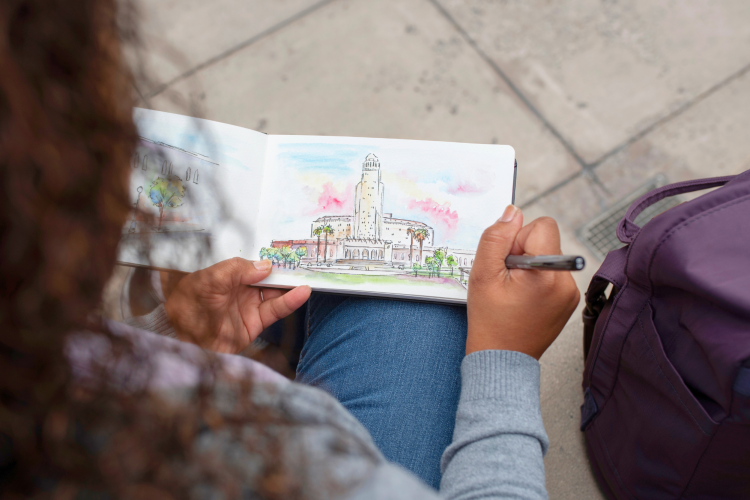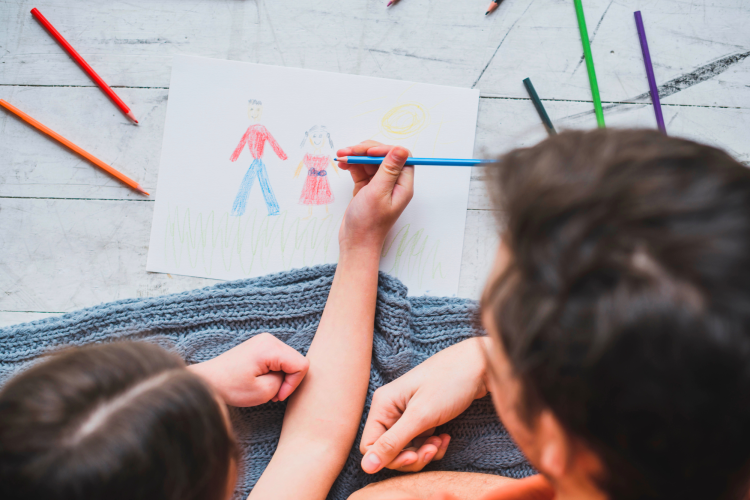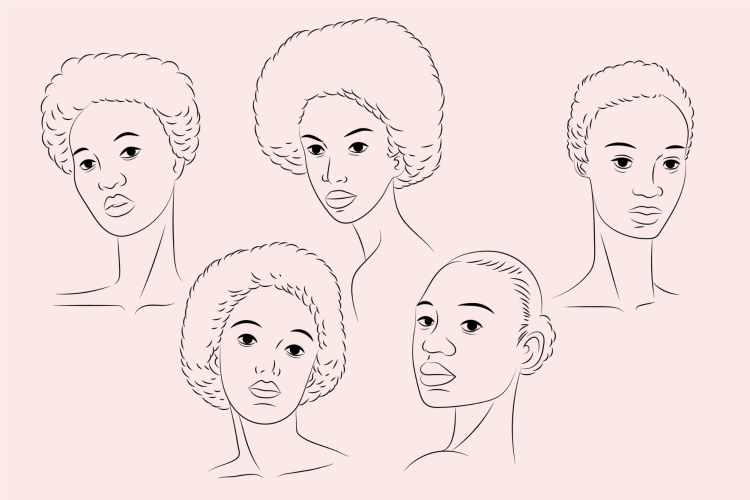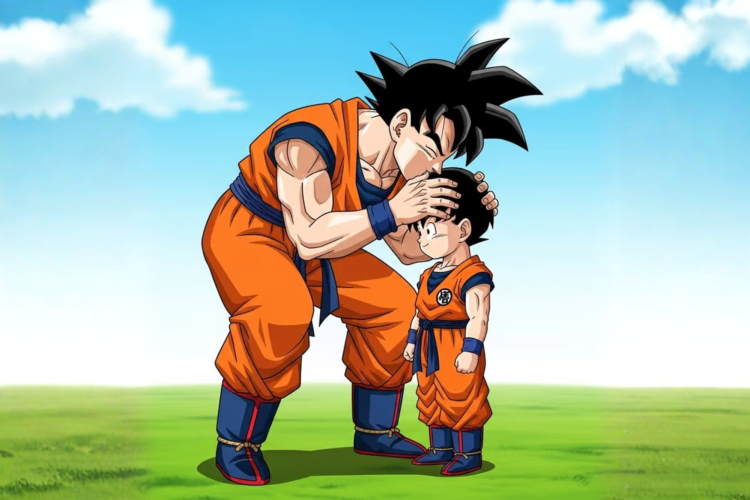Guide on How to Draw With Examples for 2025

How to draw is one of the first things we learn as children without even knowing it, and it's often a skill we abandon sometime during school. It's time to pick it back up — or help your children improve their work!
How do beginners start drawing? It often comes down to passion and a pencil. Doodling is fun, and it's a nice way to get started, as well as to get into the habit of holding a pencil or other drawing tools.
In his book, The Dynamics Of Art As Therapy With Adolescents, Bruce L. Moon states that “Art making is a natural action language for many people.” So, don't overthink it. Just grab your tools and start drawing. Whether you want to produce artworks for your friends and family or you just need a creative outlet for stress, drawing is one of the simplest creative hobbies to learn.
Jump to Section
- How to Draw: Tips for Beginners
- How To Draw a Girl or a Boy Step by Step
- How To Draw a Dog
- How To Draw Goku
How to Draw: Tips for Beginners
How To Draw for Adults

For those of us whose brains have been hard-wired by society to fear imperfection, it can be difficult to take up a new hobby because we fear we won't get it right the first time. However, practice is the most important way to improve your skills.
If you're trying to find out how to draw for someone else, you may also want to provide them with drawing utensils and online art classes, as these make lovely gifts for artists. If you're here to find out how to draw for yourself, those who are new to the game may want to start at square one.
What Is The Simplest Way to Draw?
Sketching is the answer, as it requires only a pencil and a little imagination (or a model or photograph to guide you).
How to Sketch Properly?

While there are no hard and fast rules, aside from frequent practice, there are a few tips you might follow for improved performance.
You could begin by making lots of short lines or crosshatch marks. You can use a variety of pressures and hand steadiness to test the thickness of the lines. Another way to get your hands used to holding the pencil more naturally might be to make figure eights on the page. You can also create circles, using brush strokes and different forces to add levels of variation to each circle. This helps to add a little of your own style even to drawings you're copying from a tutorial!
If you're looking for more precise hand movements, work with rulers or cups to create the necessary motion habits for the muscles in your fingers, hands, wrists and arms. Once your muscles are used to the motions that you want to make as you draw, it will feel like second nature, and drawing won't seem like such a difficult task.
Another basic skill to develop when learning how to draw is creating basic shapes. Almost any object or creature in life can be drawn by beginning with basic geometrical shapes such as squares, rectangles, circles and triangles.
If you want your shapes to appear more precise, try to create several short lines instead of one long one. This helps to keep the dimensions of the shape you want to make in a fluid motion. Longer, slower lines make drafting shapes more difficult. The shorter the lines you use, the more accurate the shape should be, unless you have a lot of practice with longer lines. Once you have the basic elements of shapes down, you can use them as building blocks for images — from flowers to faces.
How To Practice Drawing?

One way to practice these skills together is to create many sketches of the same item, quickly, without focusing on details. This way, your muscles learn the motions you wish to create, and your eyes can coordinate with your muscles. Try to always be creative, changing up what shapes you use and playing around with them.
Crafting a piece of art should be fun! So go easy on yourself if things aren't perfect. Mistakes are where we learn our best tricks.
When you feel you've mastered these basic skills, you can continue to refine and add texture and details with techniques like using darker lines to emphasize certain points of the piece or creating shadows in certain areas of your drawing to show how lighting affects an image.
How To Draw for Kids

For children, the simplest way to learn how to draw is to let it come naturally. Children don't yet have the burden of worrying about how others will view their work, at least not to the extent that adults have been programmed to.
How to draw fast and easy for kids? Hand the child some paper and pencils and let them get to work. Believe them when they tell you what they've drawn, even if you can't see it (this is a lesson learned in the first chapters of the famous children's book Le Petit Prince).
When your child wants to advance their skills, teach them the same step-by-step methods that help an adult learn how to draw. They may even pick up the abilities more quickly since their brains have not yet finished developing — in the same way that children pick up new languages more easily. Art is its own kind of language, after all.
How To Draw a Girl or a Boy Step by Step

The classic art inspiration tends to involve people. From cartoons to self-portrait ideas, girls and boys, men and women and humans of all faces have often featured in drawn works of art from Warhol paintings to Monet paintings. Faces are the most important, and possibly the most difficult, item to draw.
If you were drawing a cartoon body, the process for that is even simpler, as it usually involves those basic elements of geometric shapes (a rectangle and triangle combination for a dress, two or three rectangles together for pants and so on). If you're drawing a realistic body, the details are similar to drawing humans or animals — or anime characters like Goku (see below).
How To Draw a Face

Let's start with the face, which is pretty much the same for a girl or a boy, except for a few small finishing touches. How to draw a face starts with drawing an oval — which is the classic face of a human head. Next, add the ears, which are two small half ovals that start at half of the face's length.
Add the eyes at around the same horizontal line as the ears. You can draw large anime-style eyes, or smaller, more natural ones. Don't forget the eyebrows just above the eyes. These are usually the same length as the eyes.
Add a cute button nose or a large bulbous one, depending on your style. You can create a small round semi-circle at the base of the eyes or one with a high nose bridge that connects the top of the eye to the base of the nose. Drawing the bridge of the nose gives the face a more masculine air, while shading instead of harsh lines will work best for female faces.
Add a mouth just under the nose by drawing a single line, or get a bit more detailed with a sort of flattened heart shape. The lips should be positioned halfway between the tip of the nose and the chin, usually using curved lines to form a rounder effect for female lips.
When you're working on a realistic face, you'll want to add a couple of horizontal lines through the oval to help with spacing for your future details of eyes and nose. This will also keep them proportional by breaking up the space into three sections.
For example, place the eyes on the top horizontal line and ensure they are the same width as each other (symmetry can be important unless you're drawing in a Cubist style like Picasso). One tip is to make the space between the eyes the same width as the eyes themselves, which closely resembles how eyes appear on our real-life faces. Female eyes tend to be wider and larger than men's, as well as having more arched eyebrows and longer eyelashes (don't neglect the shorter lashes on the bottom eyelids).
For hair, if you want longer or fuller hair, begin below the top of the oval (“forehead”) to create bangs in the style you want to show — and for fullness, the shape of the hair should be wider than the oval itself.
How To Draw a Body

Now that the difficult part is over, you can draw the rest of the body. Create a neck by drawing two curved lines out of the chin and extending these lines to create the shoulders.
Lift your pencil and create a sort of rectangular box for the torso.
Now, draw in the legs. The most important thing to remember here is that legs shouldn't be two straight lines. Remember that they curve by the thigh, knee, calf muscle and ankle. The length of the legs will usually be in direct proportion to the torso plus the head.
Now you can add in the arms, which should go from the shoulders up to around the thighs. Add in any clothing you want, shoes and additional features. For a more feminine look, add a dress or skirt. More masculine images will have a t-shirt and shorts or long pants.
How To Draw a Dog

Who doesn't love the look of a cute or sweet dog drawing? Adding this to your skills will impress and delight your friends. Whether you're practicing adding animals to your landscapes or drawing a portrait of the family pet, here are a few in-depth tips to help you get started.
Once again, it's easiest to start with geometric shapes, generally circles — in a side view pose, when drawing a full body, you'll want a larger size for the two body circles and a smaller circle for the head.
The next steps involve adding a smaller circle to the outside of the head circle to create the nose and mouth area (“muzzle”).
Use mostly parallel lines to connect the two body circles (don't forget that in sketching, you can do this with lots of short, light lines, rather than one long line) and add a single line from the end of the body to be the dog's tail.
You can draw the legs with a few short lines (about three per leg), making sure to leave a small bend in each one to show the knees. Dogs do have knees (called stifles) and ankles (called hocks). This shows that it's important to understand the anatomy of the person or animal you're drawing.
As this is a side portrait, you'll only need one small triangle for an eye and one larger triangle for an ear, which may partially overlap the head circle. The nose can easily be created with a smaller circle on the end of the “muzzle” area.
At this stage, add a fuller outline around the basic drawing you've formed, using a softer pencil for darker effects. Adjust the outline for body shape, including areas like the face and belly. You can change the girth and how the fur lies differently at the bottom than the top (usually less smoothly), and you can add a tongue or other facial features. Don't forget that the dog's legs tend to get wider at the top as the muscles are larger.
If you want to draw your dog in a different pose, simply switch the positions of your original three circles before you make your outline. The tail and leg lines are simple enough to draw in different poses. For front-facing facial features, there are some additional techniques you can work with.
For instance, the eyes of a dog tend to be more circular than human eyes. You can add eyelids and pupils, with a point left blank to show light reflecting off the eyes.
The nose is another detail that you'll want to change in a front-facing dog portrait. One thing to do is to form nostrils — the skin around the nostril tends to curve more at the bottom edges for dogs than for humans.
How To Draw Goku

If you're searching for how to find your art style, you might try a few different ones to see which fits you best. For example, you could work with anime-style art, such as recreating the character Goku from the Dragon Ball Z series.
As discussed previously, faces are generally the most detailed and challenging pieces of a character to draw, so with this lesson on how to draw Goku, the facial features come first.
Start With Goku's Head

Start with a circle to work with for a head, or you can create this later in outline format with marking points and sketching lines between them. Then go on to draw a frown wrinkle in the center of where the eyes would be — you can use the same method from above by dividing the face into three sections.
Goku's extremely expressive eyebrows make this drawing task a bit more complicated, as they require more practice to perfect. Begin the angled eyebrows at the frown wrinkle, reach up and arc over the eyes. The arc should be about four times longer than the wrinkle line itself.
Sketch a half-circle starting at the base of the eyebrow and near the meeting point of the wrinkle mark and eyebrows. This will be his pupil (or pupils if you're repeating this for a front-facing portrait, where you'd repeat for symmetry).
Create the bottom and sides of the eyes by adding small vertical lines between the pupil and the wrinkle line, and on the opposite ends of the eyes. The horizontal lines should only extend halfway across the eyes.
Add his small nose by leaving space the same length as the horizontal wrinkled line and add a vertical line to form the ridge of the nose, with a horizontal line at the bottom that is the same length as the one above, keeping our symmetry on track with an L shape. You can also add more to the nose by including a V-shape below the horizontal line and an angled line above the nose that aligns with the top nose horizontal lines.
Take a moment to decide what expression you want to have Goku making in this image. The mouth is much less challenging to draw because the focus of the anime style is usually on the eyes, rather than the lips — at least for male-presenting characters. One line that curves up at an angle should suffice.
If you want to emphasize his cheekbones and chin indent, you can draw horizontal small lines below his mouth (about half the size of the mouth, each) and draw two slightly curved lines beneath one eye, while you draw only one of the same lines underneath the other, which will also help to give definition to the eyes.
If you chose to wait to form the head in outline, you can do this now.
Goku has two large ears, which start at the temple and then curve, ending closer to the mouth. For proper proportions, the ears should reach from approximately the tip of Goku's nose to the bottom of his mouth.
How To Draw Goku's Hair
Now you can start crafting Goku's infamous hair. Use triangle shapes to guide you in creating the large and boisterous hair. Keep the hair black in most cases, unless you're drawing him in Super Saiyan pose — this will take some time to get right, as this blonde version of Goku has many more triangles to add.
How To Draw Goku's Body

Moving on to the rest of the body, the neck and shoulders come next. Draw the neck with two small lines on either side of the chin. The shoulders should run out from the bottom of the necklines. To include a little extra “detail,” add a small V in the check area to show Goku's muscles. Adding some horizontal lines will help to show his pectoral muscles.
You can also create an outline for the chest by making an oval there that is larger than his head — or work to create the vest he often wears with sharper lines and brighter colors (deep red or yellow-orange and blue). The vest will curl at the shoulder line, to show that it covers his back as well, in true 3D art style.
For Goku's midsection, draw beneath the chest a half-square shape as well as a pentagonal shape for the pelvic area. This character wears a belt, so use darker pencils and angular lines for emphasis.
When crafting the arms, use ovals of varying sizes with a series of curved lines at the top to show his muscles — but don't forget to include a line that connects the bicep to the forearm.
End with square shapes for the wrists, which are his wristbands. A small circle will suffice for the closed hand resting on Goku's hip (his most common pose). Repeat this process for the second show, but perhaps adapt it to fit the pose.
In crafting the pants, use long rectangular shapes as a guide. Goku wears his belt pretty high up his waist, so the length from his belt to his toes should be about double the length of his belt to the tip of his head (excluding his hair).
Feet are drawn in a similar way, using rectangles and curved lines to create a boot-type shoe.
You can also seek out experts in particular styles of artistry, such as anime, to truly learn to do justice to your favorite characters or create your own.
Art can be the most therapeutic tool to relieve stress, or you can use it to impress your dates. Whether you're looking for love or hoping to share your love for someone by recreating their expression through a portrait, these tips will help you obtain your goals.
In terms of how to elevate your artistic skill, you might even try taking a paint and sip class where you can learn classic techniques while enjoying snacks and beverages of your choice.
For even more fun art ideas, check out other experiences happening on Classpop!

